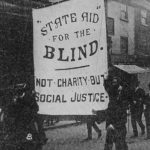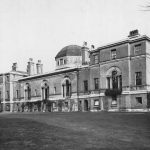Chiswick House was built by the third Earl of Burlington in 1729. Inspired by the Roman and 16th century Italian art and architecture he saw while on a Grand Tour, he used the building to display his art collection and entertain friends.
By the turn of the 20th century, the building had quite a different use: it was used by the Tuke brothers as a private asylum for up to forty patients with complaints ranging from addiction to epilepsy. The asylum was known for its humane treatment of patients, and when Charles Molesworth Tuke died in 1925, his obituary said ‘he made for himself a name that will be lasting and that stands for all that is best and most human in the treatment of insanity’.
The wings of Chiswick House used for the asylum were demolished in the 1950s, so there is now little sign of the Tukes’ work. However, their casebooks are now archived at the Wellcome Library.













